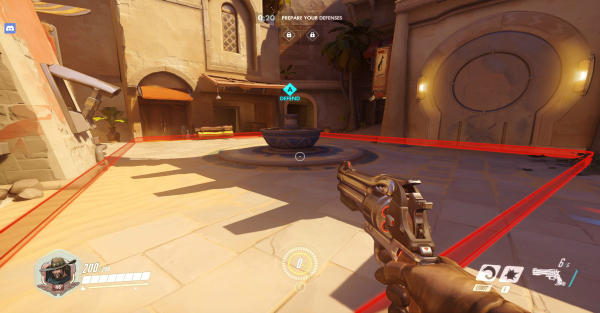A couple of updates ago, Blizzard implemented a change to Overwatch's competitive game mode that would sharply lower the chances of a match ever resulting in a tie. The update allowed players to immediately win a round if they made even the slightest more progress on the objective than the enemy team. This move was generally unpopular amongst the game's community, many of whom felt that the change led to unbalanced and generally unenjoyable gameplay.
Videos by FanBuzz
For those unfamiliar with Overwatch, I'll explain.
Overwatch features a variety of game modes that pit teams of six players each against one another in an objective-based match. Many of these involve a king-of-the-hill styled capture-point. The attacking team has to capture it to win, while the defending team's objective is to stop them. The attackers can't make progress if even one member of the enemy team is on the objective, and if the timer runs out before they capture it, the defenders win. The game then swaps the teams, allowing both a shot at their enemy's previous role.
In the past, if neither team could capture the same objective, the match would result in an unsatisfying tie, and no one would get any rank points. In an effort to eliminate this problem, Blizzard released a change alongside the Uprising event that narrowed down the requirements for a victory. Now, all players had to do was make more progress on the objective than their opponents, and they would win.
While this sounds nice in theory, the reality was that in many matches the attackers never even made it to the first objective, meaning that all the defenders had to do once their roles were reversed was to reach 1% on the capture objective. This has resulted in short and unsatisfying matches, and has left the update rather unpopular amongst the game's competitive community.
According to a recent forum post by Overwatch Principal Design Scott Mercer, the development team is definitely aware of this effect. "While this new rule makes ties exceedingly rare," Mercer admits, "there are now some gameplay situations that ended up feeling more awkward with the new rule."
Mercer then revealed their plans for a change, stating that "Instead of needing to simply earn 1% more progress on an objective than the enemy team to break a tie and win, a team will also now also need to achieve a minimum of 33% progress." In a full quote, Scott Mercer provided an examples of situations where this would have an effect.
"Team A attacks the first objective on Hanamura, but only gains 10% progress after a really rough offensive round.
Team B then attacks, but they can only gain 20%.
This is a TIE. Neither team achieved the minimum of 33%.Team A attacks the first objective on Hanamura, and gains 90% progress. (So close!)
Team B attacks, and only gains 40%. progress.
Team A WINS, as they had a minimum of 33% and more progress than their opponent.Team A attacks the second objective on Hanamura, and fully captures it with 3:00 left.
Team B attacks the second objective on Hanamura, and captures it in overtime with 0:00 left.
Team A now is back on the attack, trying to take the first objective. They can only reach 20% progress after their time bank of 3:00 elapses. This is a TIE. They did not meet the minimum target of 33% progress. If Team A had reached 33%, then they would have won the match."
Competitive Overwatch players should now be able to breathe easy. Though no release date has been revealed for this change, it will likely come into play in the game's next update.
